#Pompey Square
Text
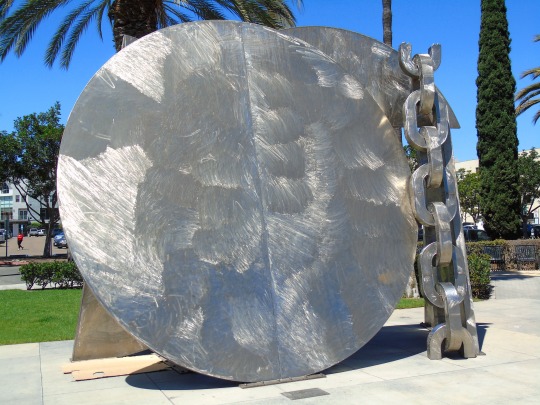


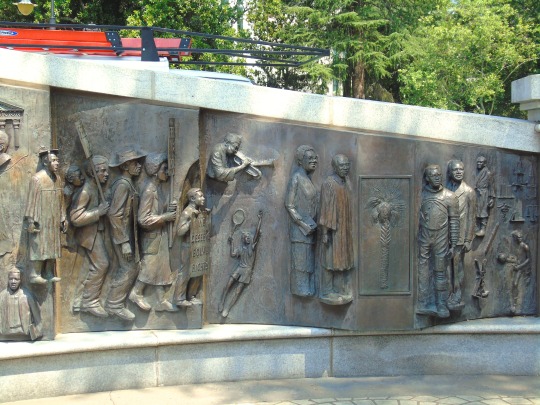














The International Day of Remembrance of the Victims of Slavery and the Transatlantic Slave Trade
The International Day of Remembrance of the Victims of Slavery and the Transatlantic Slave Trade is honored on March 25. It was observed for the first time in 2008. The day honors and recalls the more than 15 million people who were brutalized for over 400 years as a result of a slave system. The Panamanian port city of Portobelo is a key entry site during the transatlantic slave trade for enslaved Africans who would then be transported to various locations if they survive the treacherous ocean voyages. Despite its abolition, slavery still exists today in various ways.
HISTORY OF INTERNATIONAL DAY OF REMEMBRANCE OF THE VICTIMS OF SLAVERY AND THE TRANSATLANTIC SLAVE TRADE
The transatlantic slave trade was the world’s largest forced migration and unquestionably one of the cruelest. Over 400 years, a massive exodus of Africans spread over the globe in a way that had never been seen before or recorded in human history. Between 1501 and 1830, a ratio of four to one African to European crossed the Atlantic, making the American population more of an extension of Africans than Europeans.
During the 16th century and up to the 19th century, approximately 15 to 20 million individuals were carried against their will from Africa to Central, South, North America, as well as Europe. The transatlantic slave trade was a profitable triangular commerce between Europe, the Americas, and West Africa. It provided the foundation for most of Britain’s prosperity. Slaves were traded as men, women, and children in various slave trading systems. During the travels, up to 2.4 million slaves died, with millions more dying soon after. Slaves were sold to serve as domestic servants, on plantations, mines, and rice fields.
Britain was the first country to establish legislation prohibiting the slave trade in 1807, and by 1815, the British had persuaded the Netherlands, Spain, France, and Portugal to follow suit. Slave trading was made illegal in the United States nearly five years later, in 1820, and was eventually abolished in 1865.
INTERNATIONAL DAY OF REMEMBRANCE OF THE VICTIMS OF SLAVERY AND THE TRANSATLANTIC SLAVE TRADE TIMELINE
1619
Arrival on Virginia Shores
A Dutchman forces the first captives onto Virginia's shores.
1776
Signs of Segregation
Slaves, Africans, and African Americans are not included in the Declaration of Independence.
1865
Slavery is Abolished in America
Slavery is abolished in the United States.
1950s and 1960s
Anti-segregation March
Civil rights leaders lead anti-segregation marches across the country.
2013
Slavery in the 21st Century
Approximately 25 to 40 million people are still enslaved, the majority of these in Asia.
INTERNATIONAL DAY OF REMEMBRANCE OF THE VICTIMS OF SLAVERY AND THE TRANSATLANTIC SLAVE TRADE FAQS
Who started enslaving Africans?
The Portuguese.
Is there a day for Anti-slavery?
There is, indeed. October 18 is Anti-Slavery Day.
Who created slavery?
Sumer or Sumeria is believed to be the birthplace of slavery.
HOW TO OBSERVE INTERNATIONAL DAY OF REMEMBRANCE OF THE VICTIMS OF SLAVERY AND THE TRANSATLANTIC SLAVE TRADE
Spread awareness: Make use of your platform and voice to raise awareness about the perils of racism and discrimination in today's world. Use the hashtag #rememberanceofvictimsoftransatlanticslavetrade to share posts and facts concerning racism.
Make donations: With a sad heart, we must also accept that, despite the abolition of slavery, it continues to exist in modern forms. You may donate or learn more about how to help victims of modern-day slavery by visiting the United Nations Voluntary Trust Fund on Contemporary Forms of Slavery.
Visit the Ark of Return: Visit The Ark of Return, a permanent memorial honoring slavery and the transatlantic slave trade victims. The visible reminder that slavery's legacy, such as prejudice and inequality, continues to have an impact on us.
5 FACTS WORTH KNOWING ABOUT THE SLAVE TRADE
A long journey: Journeying from Africa to America took approximately seven weeks.
Beginning of the Atlantic slave trade: In the 1440s, the Atlantic slave trade began.
Slaves were used on plantations: Enslaved Africans were taken to Portugal or Atlantic islands like Madeira to labor in agriculture.
The first beneficiaries: The Portuguese were the first to embark on and make huge profits from the slave trade.
West Central Africa: About 40% of people taken into slavery were from West-Central Africa.
WHY INTERNATIONAL DAY OF REMEMBRANCE OF THE VICTIMS OF SLAVERY AND THE TRANSATLANTIC SLAVE TRADE IS IMPORTANT
It teaches us about a sad past: Learning about the dehumanizing treatments and effects of slavery will prompt us to action. The future can only be better if we learn from the mistakes of the past. This will lead to the wholeness and healing that the world so desperately needs.
It honors the victims of the slave trade: The event commemorates and pays respect to the millions of lives lost to slavery and the transatlantic slave trade. It also emphasizes the prevalence of modern-day slavery and the need to eradicate it.
It helps to promote awareness: Even though slavery has been abolished for over 400 years, its legacy lives on. This day brings attention to the events that occurred and how retribution can be carried out. It also raises awareness about the negative effects of racism and prejudice.
Source
#International Day of Remembrance of the Victims of Slavery and the Transatlantic Slave Trade#25 March#Breaking the Chains by Melvin Edwards#public art#San Diego#Abraham Lincoln#Boston#Old Slave Mart Museum#Charleston#Pompey Square#Nassau#Bahamas#former slave mart#cityscape#photography#photoset#travel#original photography#vacation#tourist attraction#landmark#architecture#Emancipation Statue by Thomas Ball
2 notes
·
View notes
Text
"went on a trip to Venice before it sinks" I'm killing you with my mind
#and then show water on the floor of a square like it's a sign GIRL EVERY WINTER THEY BECOME A FUCKING LAKE IT HAS BEEN THAT WAY FOR A WHILE#they read venice is one of the first that is gonna have the most damage by the sea rising because of climate change and they just assumed#it's gonna happen in the next five fucking minutes#they have more boats than cars of fucking course if you go in january you gotta wear rubber boots everywhere italy.climate.is.diverse. and#you're in the fucking north!!! it's colder!!!! yes climatw change is real and is doing a LOT‚ i live in the sout aqnd this winter is colder#the last summers have been devastatingly fucking HOT#it's true that venice methods for weather destruction reduction have been veeery expensive and yet not good enough#but you're not assisting live to fucking Atlantis or pompei okay?
1 note
·
View note
Text


Ancient Roman Temple Where Julius Caesar was Assassinated Opens in Rome
The square contains the remains of the Curia of Pompey, a central meeting place for senators where Caesar was stabbed to death on the Ides of March.
An ancient square where historians believe Julius Caesar was stabbed to death — one of the most infamous assassinations in history — was opened to the public for the first time Tuesday.
The Sacred Area of Largo Argentina, containing the remains of four ancient temples in a bustling part of downtown Rome, can now be seen up close via a lowered walkway for 5 euros ($5.50).
The site also contains the remains of the Curia of Pompey, a central meeting place for senators where it is believed Caesar was stabbed to death on March 15 (the Ides of March) in 44 B.C.
Successive generations had built on the site since ancient times, and it was only rediscovered when buildings were demolished in 1926. Three years later, another dictator, Mussolini, inaugurated it as an important historical site.
Two new exhibition areas also document the many archaeological finds at the site over the ages. The works were funded by the fashion house Bulgari and managed by the Capitoline Superintendency for Cultural Heritage.
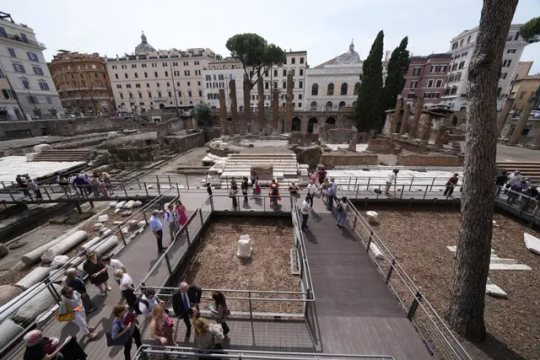
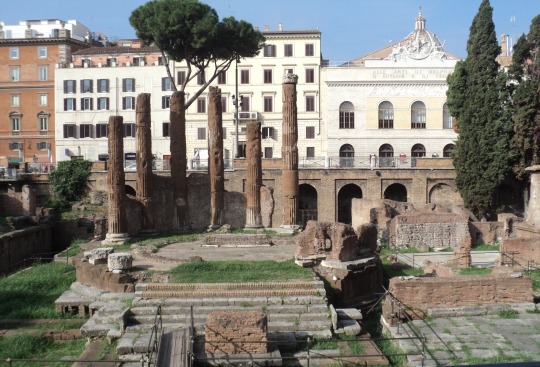

The site could previously only be seen from street level and had become overgrown with weeds. Tourists’ photos posted online show the area being enjoyed by stray cats — there is cat sanctuary on a corner of the square.
“One of the most beautiful and precious places in Rome is finally fully usable by Roman citizens and tourists, who from now on will be able to see from nearby wonderful archaeological finds from various periods of the history of our city,” Miguel Gotor, councilor for culture for the city of Rome, said in a news release.
The first recorded structure of importance on the site dates to the early third century with the construction of what is referred to as Temple C, probably dedicated to the Roman goddess Feronia.
Fires in 111 B.C. and A.D. 80 destroyed much of the earliest buildings, with those remains buried under a new floor built by the emperor Domitian in the first century.
Caesar's death has endured in Western culture as one of the most seismic political events in history, even as its details and wider implications continue to be debated.
In Shakespeare’s dramatic retelling, the dying dictator last words were “Et tu, Brute?” after he saw that his old friend Marcus Brutus, one of the murder conspiracy’s main ringleaders, was among his killers.
What is agreed upon is that Brutus and a group of Roman senators had grown concerned over the size of Caesar's power and influence and his undermining of the Republic.


However, Caesar's killing unleashed a period of reprisal and civil war that killed thousands and effectively killed the Republic. His named successor, his adopted 18-year-old son, Octavian, became what is regarded as Rome's first emperor in 27 B.C., known by then as Augustus.
Such is Italy's vast wealth of archaeological treasures that many important sites have yet to be excavated and thousands of found items have never been put on public display.
Historians' understanding of ancient Rome is still evolving as more items are found. In April a new study shed light on the use of Roman wineries in theatrical ceremonies, while in May archaeologists revealed how people were killed in an earthquake triggered by the immense eruption at Vesuvius in A.D. 79.
By Patrick Smith.
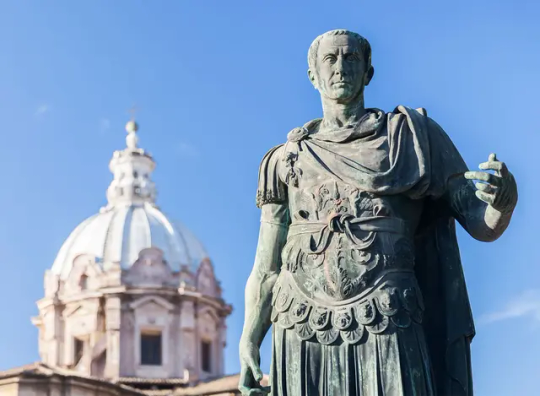



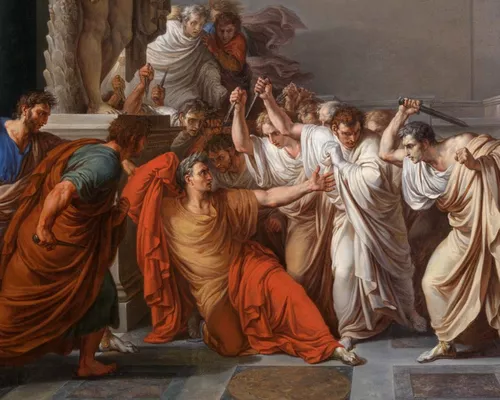
#Ancient Roman Temple Where Julius Caesar was Assassinated Opens in Rome#Curia of Pompey#The Sacred Area of Largo Argentina#Ides of March#ancient artifacts#archeology#archeolgst#history#history news#ancient history#ancient culture#ancient civilizations#ancient rome#roman history#roman empire#roman ruins#roman art
187 notes
·
View notes
Text
Avenues of female political influence in late republican Rome:
Senior women frequently acted as advisors to their brothers, husbands, children, and occasionally even parents. Servilia is known to have had a strong influence over her brother Cato even in his adulthood, Fulvia was a key agent and confidante for each of her husbands, and even Tullia sometimes sent letters telling her father Cicero what she thought he should do.
Women had their own social networks in parallel to men. They visited each other for social engagements, religious observances, scoping out marital prospects for themselves or their children, and passed along letters and information. Aristocratic women like Servilia could often visit politicians' households more easily than their male relatives could, and female clients would often prefer to approach their patron's wife than the patron himself. Women could also be patrons with client networks in their own right.
Women could act as negotiators, spies, and go-betweens. Mark Antony's mother negotiated with Sextus Pompey on Antony's behalf; Servilia pulled strings to get Brutus and Cassius' provinces reassigned. Men often relied on their female relatives to tactfully sound out alliances, gauge public opinion, or collect intelligence while the man could maintain plausible deniability.
Women could canvass or intercede on behalf of relatives. Although being too publicly active was considered embarrassing, it was quite proper for a mother, wife, sister or daughter to talk to the family's allies, clients, and other politicians to get benefits for her kin. They could help male relatives get elected, taken off proscription lists, or get his legislation more support.
Women were probably consulted on most marriage alliances, and thus on political alliances via marriage. Mothers, grandmothers and aunts in particular were often involved, thanks to their extensive social networks and opportunity to assess potential spouses. Although brides usually didn't get much say in their first marriage, they usually had more choice in second and third marriages.
Women's social connections were especially important due to Rome's barebones civil infrastructure. Compared to modern states, republican Rome had very few magistrates or civil servants. There were also few "social services" in the modern sense. People relied on family connections and the patron-client system in order to meet their needs, respond to emergencies, and get things done. Having more friends in as many places as possible was necessary for political survival; you couldn't afford to sequester your women.
When men went overseas to govern provinces or serve in the legions, it was often their female relatives who managed estates in their absence, advocated for their interests in Rome, and kept them updated on political events. This was especially important in the late republic, when wives didn't normally follow their husbands to the provinces. A wife was expected to be a representative for her husband and point of contact for his allies. Mothers, sisters and aunts may do the same.
Property and power went hand in hand. Wealthier women had more social and political influence. Changes in marriage and inheritance law resulted in more women owning property in their own right during the late republic. Unless a will was written otherwise, by default sons and daughters inherited equal shares of an estate. Sine manu marriage enabled women to become legally independent at earlier ages, take back their dowries after divorce, and avoid being completely under their husbands' authority.
Although women couldn't vote or run for office, and were expected to use their influence in private homes instead of the public square, there's no doubt that aristocratic women like Servilia, Fulvia and Aurelia played major parts in building alliances, furthering their families' careers, defusing conflicts, and sometimes starting new ones. A particularly well-connected woman like Servilia could exert more weight in the Senate than most senators.
The system they lived in aligned their personal interests with those of their husbands, sons, and birth families, so most of our evidence shows women acting on behalf of men rather than pursuing personal agendas. These allegiances also ran along class lines: Servilia would have been far more interested in preserving her family's reputation, security and wealth than in the issues of poor or middle-class women.
In Roman politics, the personal was political. Parties and get-togethers were networking events. Weddings were for the families' joint prospects and goals as much as they were about the newlyweds. Friendships were expected to include reciprocal favors in business and politics. Your very house was both a symbol of yourself as a person, and your political hub, and your children would learn the system and make connections as much as home as in the forum.
This means that women, by necessity, were heavily involved in Roman politics. We have less documentation of their work than men's, since so much of it was unofficial and behind closed doors, but the republic depended on aristocratic women's skills, activities and relationships as much as on men's.
(Notes taken on Servilia and Her Family, by Susan Treggiari.)
#and of course the aristocratic women AND men depended on tons and tons of slaves!#behind every great man there is a great woman. and several thousand enslaved/underpaid workers. and probably some imperialism.#this is 50% notes to self so i can give female characters significant roles if i ever write a rome fic#servilia and her family#jlrrt reads#roman women#susan treggiari#jlrrt essays
133 notes
·
View notes
Text
One MORE: Clocktown is LonLon is Hyrule
What happened to the citizens of Hyrule Castle in z64? Well, they simply left. When Death Mountain started erupting, the King out of commission, and Zelda missing.
The townsfolk simply left, either temporarily staying at Kakariko Town, or simply moving elsewhere.
And what is the nearest safe haven if Ganondorf is *also* out of the picture?
Lon Lon ranch. That square plot of land I talked about before looking like a particular castle from a particular Twilight Zelda game.
My Theory Goes; after the events of Z64, and being sent back to the past by elder Zelda, Link is given a specific set of instructions to give to her childhood self (That other theory that I set forth before, was for the whole section of the fanbases that is *obsessed* with the Ben drowned and Link Died theories. The one I don't particularly like.)
That unstoppable volcanic eruption causes global warming and rising tides. (And the Zora in Z64s Zoras Domain aren't River Zora, they're Ocean Zora. River Zora are closer to reverse mermaids in the series lore, and they're not friendly most of the time. See z1-3. And the Oracle of Seasons which says it outright.)
Which means that *lake hylia* might just be a basin left over from very low tides. (And if you think the falling moon really is the moon, the reason for rising tides, and in the wisdom timeline which doesnt have Link, causes eternal flooding. And in the MM timeline with Link, stops it.)
(I am not gonna do the entire map examination since all I have is my phone)
The Deku Scrub temple is in a swamp, caused by the flooding, which brought prosperity to the monkeys and the Deku scrubs (The monkeys could be monkeys, or that particular installment of Koroks, which isn't clarified, but when the Koroks/Kokiri are missing, there always seems to be monkeys...)
So what do villagers do after fleeing both the castle and Kakariko because of the impending doom Mt. Pompei brings?
Start building. Which explains why the construction workers are nonstop busy building housing for displaced people. And why the Bomber Kids seemingly don't have parents. (They were lost or injured themselves due to Ganon AND the eruption)
But, if that *is* the case, why doesn't those giants help protect Hyrule?
And my answer is that; They're too powerful to care about a single kingdom, they come and go.
But when it comes to the world's destruction, that's when they care.
That was kind of the entire story of MM's Skull Kid. Feeling abandoned by the greater powers their friends had. And leaving the Kingdom of Hyrule to die.
But which is more important; one kingdom, or every kingdom?
7 notes
·
View notes
Text
The ides of March was a riot, and Julius Caesar was a brawler.

Mark Twain:
Instantly seizing upon this shallow pretext for a fight, Casca sprang at Caesar and struck him with a dirk, Caesar grabbing him by the arm with his right hand, and launching a blow straight from the shoulder with his left, that sent the reptile bleeding to the earth. He then backed up against Pompey’s statue, and squared himself to receive his assailants. Cassias and Cimber and Cinna rushed upon him with their daggers drawn, and the former succeeded in inflicting a wound upon his body; but before he could strike again, and before either of the others could strike at all, Caesar stretched the three miscreants at his feet with as many blows of his powerful fist. By this time the Senate was in an indescribable uproar; the throng of citizens in the lobbies had blockaded the doors in their frantic efforts to escape from the building, the sergeant-at-arms and his assistants were struggling with the assassins, venerable senators had cast aside their encumbering robes, and were leaping over benches and flying down the aisles in wild confusion toward the shelter of the committee-rooms, and a thousand voices were shouting “Po-lice! Po-lice!” in discordant tones that rose above the frightful din like shrieking winds above the roaring of a tempest. And amid it all great Caesar stood with his back against the statue, like a lion at bay, and fought his assailants weaponless and hand to hand, with the defiant bearing and the unwavering courage which he had shown before on many a bloody field. Billy Trebonius and Caius Legarius struck him with their daggers and fell, as their brother-conspirators before them had fallen. But at last, when Caesar saw his old friend Brutus step forward armed with a murderous knife, it is said he seemed utterly overpowered with grief and amazement, and, dropping his invincible left arm by his side, he hid his face in the folds of his mantle and received the treacherous blow without an effort to stay the hand that gave it. He only said, “Et tu, Brute?” and fell lifeless on the marble pavement.
3 notes
·
View notes
Text
In the popular imagination, the story of Caesar’s assassination has long been influenced by Shakespeare’s Julius Caesar, written around 1599. The playwright’s version isn’t a historical record, and it takes liberties with certain details, including the location.
Archaeologist Monica Ceci, who oversees the site, acknowledges that visitors “may have a hard time imagining [the true story], because the Shakespearean drama induces you to think that the murder was in the forum,” she tells the Times.
In reality, Caesar was stabbed to death in the Curia of Pompey, a structure built by one of Caesar's contemporaries, the Roman statesman Pompey the Great.
19 notes
·
View notes
Text



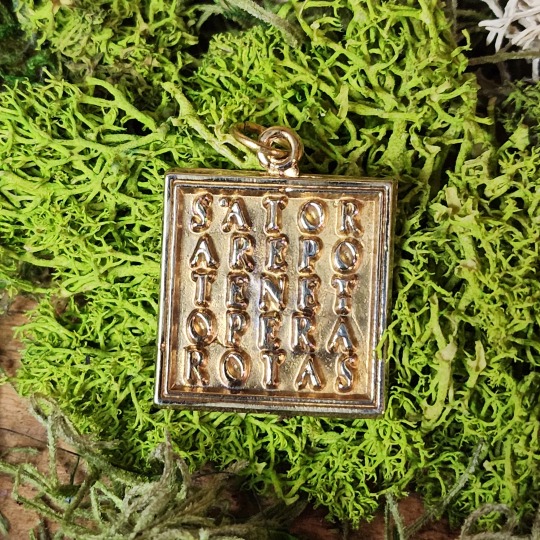
Sator Square talisman with upeye to be worn as a pendant or key fob.
The Sator square is a quadruple palindrome with deep and wide magical history with the oldest known example dating back to Pompei. Magical applications include generic protection, cursebreaking, and defense against malicious spirits.
* Made of solid .925 sterling silver or yellow brass.
Each piece is hand-made to order in my home studio, with unique variations and defects as a result of the fabrication and casting process.
These talismans are NOT consecrated. That is your responsibility.
https://www.etsy.com/listing/1132492351/sator-square-pendant
#Occult Art#Pagan#Witch#Witchcraft#Sator Square#Witch Jewelry#Magical Jewelry#Jewelry#Jewelry Art#Art Jewelry#Queer Artist#LGBT#Sorcerers Workbench
5 notes
·
View notes
Text
The most beautiful Egyptian beaches
Egypt is one of the most beautiful countries in the world, and it is characterized by enchanting deserts, wonderful greenery, and stunning beaches. Due to its privileged location, Egypt has beaches on both the Red Sea and the Mediterranean Sea, in addition to the banks of the Nile and many beautiful lakes and oases. Let's take a ride along the most beautiful beaches in Egypt. You can enjoy the most beautiful tours through Egypt Trip, Also, you can make the most beautiful tourist tours by choosing multiple places and making it possible to visit a number of places and provinces on the same trip through Egypt travel packages. Cairo Day Tour from Port Said: Stay tuned for a special day tour departing from Port Said that will take you to Cairo’s ancient and historical monuments, such as the Great Pyramids of Giza, the Egyptian Museum, and Khan El Khalili, the oldest bazaar in the Middle East. You can enjoy Giza Pyramids and Sakkara Trip from Port Said: From Port Said, you can join us to make a shore excursion to visit the Giza Pyramids and Saqqara which will allow you to understand the history of Egypt and its main places. Enjoy the stunning view of the pyramids and the step pyramid of King Djoser from Saqqara. Don’t miss this exciting experience!2 Days Tour Port Said to Cairo and Alexandria: Departing from Port Said, spend 2 magnificent days in Cairo and Alexandria to visit Cairo’s remarkable attractions, such as the Great Pyramids of Giza, the Sphinx, and the Egyptian Museum, before visiting most of Alexandria‘s famous places like the citadel of Qaitbay, Pompey pillar, the catacomb tombs. Overnight Trip to Cairo from Port Said: Start your 2 days tour from the city of Port Said to enjoy Cairo attractions and visit all the astonishing, unique, and attractive places in Cairo, such as the pyramids of Giza, the step pyramid of Saqqara, and the Egyptian Museum in Tahrir square to see the largest collection exhibited in the museum. Amazing Pyramids and Nile Cruise Lunch from Port Said: Relish yourself with our shore excursions from Port Said to visit Cairo which includes a delectable lunch on a Nile cruise with a dazzling view of the river and an oriental folkloric show to amuse you during this trip. Day Tour to Giza Pyramids with Camel Riding: Explore the Great Pyramids of Giza in a half-day private tour from port said which includes a camel ride around the pyramids and seeing the Sphinx, which was a protector for thousands of years, all of this before returning back to Port Said. Grand Egyptian Museum and Pyramids Tous from Port Said: From Port Said, take a one-of-a-kind trip to the Grand Egyptian Museum and the Pyramids of Giza, and be among the first to see the Great Egyptian Museum and see the most valuable treasures of Ancient Egypt.��Islamic Cairo Tour from Port Said and drop off at Alexandria: You Will Enjoy one of our most amazing tours in Cairo Top Tours to discover all the historical Islamic monuments in Cairo through Islamic Cairo Tour from Port Said and drop off at Alexandria which is a way to know more about Muhamed Ali Pasha by visiting his mosque which is located in Cairo Citadel which was built by Salah EL-Din.Pyramids Desert Safari Trip from Port Said: you will see the Giza pyramids up close and personal, and it was truly an incredible experience. you will also go on a camel ride, which was something you had always wanted to do.Trips vary and are characterized for a day or two in several ways, as it was by flying or riding modern air-conditioned cars through Egypt Day tours, A unique distinction in the rapid journeys through Egypt shore excursions, And you can combine the country between Egypt and any other country or any two countries with each other or three or more through our distinguished international trips
@cairo-top-tours @sohilaesam @lailaessam2910
6 notes
·
View notes
Text
Chapter 45: The Council (Pt. 1)
We departed the estate in Arpinum on horseback early the next morning, speeding northwest toward Cicero’s villa in Tusculum. Located, as it was, at the southern edge of the Alban Hills, Tusculum provided an ideal resting point that night, and Cicero slept well as he prepared for Pompey’s conclave the next day.

We left Tusculum at the third hour after a leisurely morning meal, knowing that Pompey’s villa was only a couple of hours ride. Connecting with the Via Latina, we travelled north around the Alban Lake and into the gently rolling hills beyond, finally arriving at Pompey’s gate, where we were met by our old friend Palicanus.

“Good, you made it!” he said, a broad smile on his face. “I had heard you were out of the city, so I was afraid Magnus’ summons wouldn’t reach you in time. I was sorry to hear of your father’s death, Cicero.”
“Thank you, my friend,” Cicero replied, as the house slaves took charge of our mounts. “Nothing could have kept me away. It’s an honor to have been included.”

“Well, Magnus has been nothing but impressed with you, Cicero,” Palicanus said, leading us through the gate into a formal garden and toward the great villa. “He admires your political sensibilities, he says – something he himself sometimes lacks, if I may say so.”
“Well, we must all play to our strengths,” Cicero joked. “After all, I wouldn’t be one to put in charge of an army now, would I? So I’m glad to be of service as I can.”

Inside, Palicanus guided us through a grand atrium and across a massive, tiled peristyle toward Pompey’s tablulinium. Never before had I seen such a display of wealth – virtually every surface was covered in gilt or marble, and the furnishings were of the finest fruitwoods. Even Cicero was affected, telling me later that, while Pompey’s fortune rivalled that of Crassus, Pompey himself was unafraid to spend freely. Crassus, on the other hand, was known to be a spendthrift.

Entering the tabulinium, we found Pompey’s guests seated in a semicircle, two empty chairs left at its end (presumably for Cicero and Palicanus). I took my place in an out-of-the-way corner of the room with two other slaves, who were obviously there for the same record-keeping purposes as I.
Besides my master and Palicanus was assembled a diverse group of Romans.

Aulus Gabinius, who, thanks to Pompey’s support, was a newly elected tribune of the plebs. He was joined by a junior senator, Lucius Afranius, who had served as legate under Pompey in Spain.

There was also Marcus Terentius Varro, one of Rome’s greatest scholars and Pompey’s house intellectual. It had been he who had written a primer for Pompey on senate procedures so that the general would not make a fool of himself when presiding over the senate as consul.
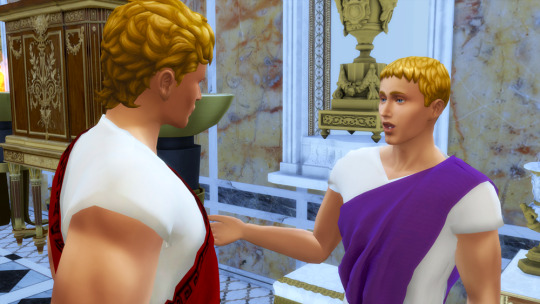
Finally, and most surprisingly, Gaius Julius Caesar. Long known to be a friend and ally of Marcus Licinius Crassus, Caesar was an unexpected presence at this particular gathering, but had obviously built a close enough relationship with Pompey to be trusted. At this time, Caesar was still young enough to be considered a novice in politics by those who did not know him well. But for those, like my master, who had been watching his career with interest, there was grudging respect – tinged with fear. Cicero said, more than once, that Caesar was an animal that, once unleashed, would turn on Rome and swallow it whole. How right he was.

As we settled into our seats, Pompey took his place in the center. While a veteran of multiple campaigns and an experienced general, Pompey was still a young man and a model of masculine beauty. His wavy blonde hair, blue eyes and square jaw made him quite handsome, yet there was nothing soft about him. In his eyes one could easily see the hard streak of cruelty that had earned him the nickname “kid butcher” before he had amended it to Magnus, or “the great.”

“Gentlemen,” Pompey said. “I am glad you are here, for today we few shall change the very future of Rome!”
BEGINNING | PREV | NEXT
#ts4 simblr#simblr#ts4 historical#ts4 story#historical simblr#ancient rome#marcus tullius cicero#a secret meeting#Pompey's plans#the wiles of Caesar#chapter 45 part 1#the council
7 notes
·
View notes
Photo






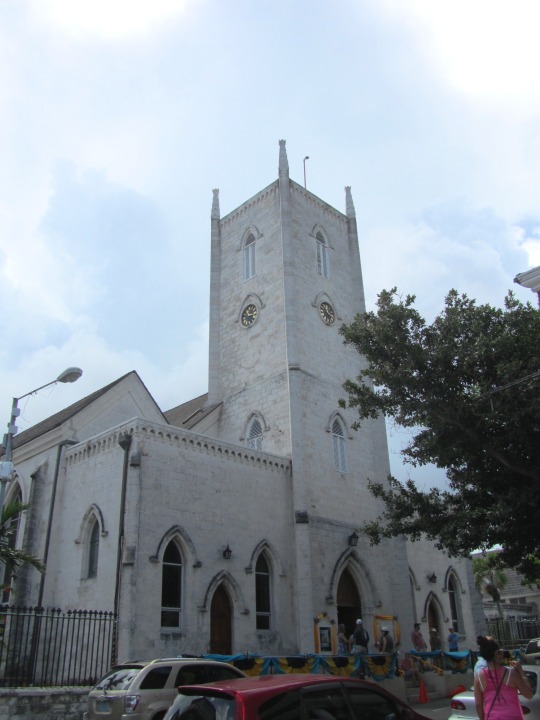
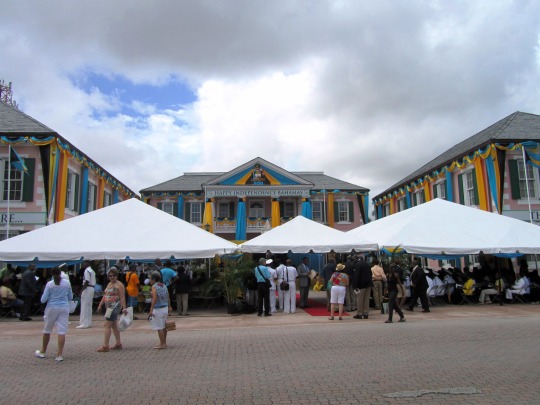
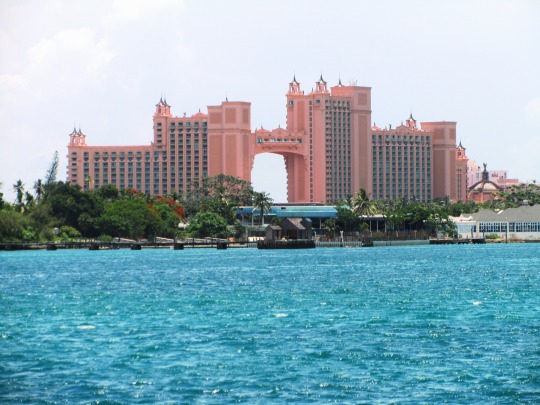

The Bahamas gained full independence within the Commonwealth of Nations on July 10, 1973.
#Bahamas#independence#10 July 1973#anniversary#history#travel#Pompey Square#Straw Market#architecture#cityscape#Paradise Island#lighthouse#original photography#summer 2013#vacation#landmark#tourist attraction#Caribbean Sea#Atlantic Ocean#Christ Church Cathedral#Rawson Square#Bahamian Parliament#map
2 notes
·
View notes
Text
During the beautiful days of the Pompei Street Festival @pompeistreetfestival , I had the opportunity to paint the wall by the terrace of Agora Hostel. @agora_hostel_pompei I chose a color scale and a motif that match the beautiful environment with terracotta colored tiles, green and brown plants for a pleasant and harmonious environment.
I also assisted @ollio during the week when he did his murals, an approximately 50 m long wall at a school and a wall/board at the square. During the entire stay, I had the opportunity to meet the world's best and nicest mural painters during fantastic mingling with delicious small dishes, good drinks and a great DJ performance with Daddy G from Massive Attack!
We also met the mayor of Pompei that thanked us for making the city more beautiful! ✨
The street art artists that I had the opportunity to see and meet in real life was
@alexsenna @marcus_gomad_debie @maxibagnasco @pandelepandele @mishkathemouse @octoflyart @akremtoujani @klonism @takir_vortex @bona_berlin @santa.gross @jerico_cabrera @joaquinvila_____juako @jaycaes @jah__one @visionary.found @alexsenna @kokonoficial @de.sors @harrygreb_art @ben_johnston @midnight_marco @run.streetart @spos.art @wedo_goas @nellopetrucci @pompeistreetfestival @isupportstreetart @etienne.cristoffanini @shot106 @rock_events @mariacamilamd @artist_man.de @oscarbrum @deedee_angelova @markram000 @elrun_ @catmichogato @caiozzama @se_cordeiro
The project was carried out with help from scholarship.
✨Thanks @svenskformväst
#scamillaebostrom #sceb #camillabostrom #gothenburg #sweden #svenskformväst #pompei #streetartitaly #streetartitalia #urbanart #graffit #graffitiart #streetart #pompeistreetfestival2022 #italianart
0 notes
Text
By Elisabetta Povoledo
For nearly a century, only cats (and presumably the rats they kept at bay) had free rein over an ancient archaeological site in the heart of central Rome. They would prowl among the ruins and preen for the tourists who gathered along the balustrades above, cellphones and cameras in hand.
But as of Tuesday, human visitors were allowed for the first time to descend and get a better glimpse of the site, believed to be where Julius Caesar was brutally assassinated by a group of senators in 44 B.C. The spot is nestled in an area with four temples, rare remnants of the Roman Republic, dating from the fourth to the first centuries B.C.
The full site, called the Sacred Area of Largo di Torre Argentina, is the latest addition to Rome’s rich archaeological offerings. The Italian capital’s mayor, Roberto Gualtieri, said at the inauguration on Monday that the attraction would add “tremendous value to a city that never ceases to amaze with its treasures and wonders.” Rome was discovering “its history to the fullest,” he added.
There is no X-marks-the-spot where Julius Caesar met his bloody end on — as tradition and the Shakespeare play “Julius Caesar” would have it — the Ides of March, about the 15th day of the month. The spot contains just a jumble of limestone rocks, bricks and tufts of grass.
That might surprise some, said the archaeologist Monica Ceci, who oversees the site.
Visitors “may have a hard time imagining this, because the Shakespearean drama induces you to think that the murder was in the forum,” she said.
Caesar was actually assassinated at the Curia of Pompey, a large rectangular meeting hall where the Senate of Rome met occasionally. The emperor Augustus later declared the hall a “locus sceleratus,” or “cursed place,” and it was walled up.
But Shakespeare “could get away with” a little artistic license, Ms. Ceci laughed.
On the opposite side of the site, marble decorations and sculptures, for decades stored unseen in Rome’s archaeological warehouses, have been displayed in a long hall under the modern-day street. “It’s one thing to keep them in order on shelves, quite another to tell the history of this site through these fragments,” Ms. Ceci said.
Irina Lumsden, a data engineer visiting Rome from Melbourne, Australia, said that the site was transporting. “It’s amazing, you get such a feeling of ancient time here,” she said “They’ve done a great job of conserving the site.”
The area was rediscovered during excavations from 1926 to 1929, when the square was being demolished to make way for new buildings. The four temples unearthed were initially labeled with the first four letters of the alphabet because archaeologists were unsure which temples they had uncovered. Now they have been tentatively identified, though there is still scholarly debate: the Temple of Juturna, after a goddess of fountains, wells and springs, dating from the mid-third century B.C.; the Temple of Fortuna Huiusce Diei, or Fortune of the Present Day, built in the second century B.C.; the Temple of Feronia, a goddess of fertility, built about the end of the fourth century B.C.; and the Temple of Lares Permarini, dedicated to the protectors of navigation, or according to others to the Nymphs, and constructed in the early second century B.C.
The Curia of Pompey was erected a little later, in the first century B.C.
After a fire devastated this part of Rome in A.D. 80, the emperor Domitian restored the temples and a travertine slab floor, still visible, was built on top of the surrounding rubble.
Over the centuries, the area underwent various further transformations, remaining buried until the excavations in the 1920s. City officials at the time immediately understood the value of the archaeological find, and the site was closed off, to be admired only from above.
Monica Baraschi, a volunteer with a cat sanctuary that abuts one corner of the ancient site, said that even the feline residents — there were 86, she said — would feel some benefits from the opening up of the spot and the arrival of visitors.
“They’ll get cuddled and caressed — the cats will be happy,” she said.
In the past, there has been friction between archaeologists and the sanctuary. Ms. Ceci, the archaeologist, said that the cats had been “good workmates” during the two years that the site was undergoing work to prepare for the opening.
Visitors on the first day also seemed glad to see a bit of ancient Rome up close. Simeon Peebler, a software engineer from Chicago, said, “In a world of virtual-reality experiences, to have a real reality experience is amazing.”
Romans were equally delighted. Sandro Lubattelli, a retired computer engineer and his wife, Rossana Cipressi, a retired teacher, said that they had spent a lifetime looking at the site from above and were thrilled to finally be able to go in.
“We always wondered why it was closed,” Mr. Lubattelli said. “We’re in seventh heaven.”
A correction was made on June 20, 2023:
Because of an editing error, a capsule summary with an earlier version of this article referred incorrectly to the role of Julius Caesar. He was a general and a political leader, but not emperor.
0 notes
Note
Im so interested in the roman empire and I want to ask you how can we go about in studying it and its figures? im always amazed to see your knowledged and makes me want to dive deep into it
Aww, thank you! I keep a list of recommended books, TV and other media about Rome, which you may like. If you are totally new to Roman history, here are my favorite "starting points":
Roma Sub Rosa, novel series by Steven Saylor: detective mysteries spanning the careers of Cicero, Pompey, and Caesar, with found family, strong female characters, and the world's most Tired Bisexual Dad for a narrator. If you like gay shipping I especially recommend book #3, Catilina's Riddle. Fiction, but mostly accurate to real history. (suggested reading order)
Masters of Rome, novel series by Colleen McCullough: Political intrigue, war drama, follows the careers of Gaius Marius, Julius Caesar, Octavian, and to a lesser extent other historical figures from 110 BCE to 27 BCE. Depicts period-typical prejudices, and has a pro-Caesar bias, but it's extremely well-researched. Has a bit of a Lord of the Rings vibe in its epic scale and strong worldbuilding.
Historia Civilis, YouTube channel covering the politics of 63 BCE to 30 BCE (and ongoing!). Mostly drama, with a bit of silliness and snarky humor. I have never been so emotionally invested in angry squares.
Overly Sarcastic Productions is another channel with some very funny, and accurate, overviews of Roman history. Blue is an enthusiastic presenter and a lot of fun to listen to.
Mike Duncan's History of Rome podcast is a whole saga spanning from 753 BCE to 476 CE. It's especially good for learning about the Punic Wars and the period after the Julio-Claudian dynasty.
Some people also get into Roman history through shows like Rome (HBO), Domina, or I, Claudius. These aren't super historically accurate, but sometimes it's helpful to watch a dramatized version first and learn the real story later. (Fair warning, each of these depicts violence and sexual assault.) Do what works for you!
After you've poked at one of those, I'd suggest reading a biography of a Roman who seems interesting. I have several recommendations on my list. Biographies are great because they're usually easy to read and feel like following a story. Or, if you want a very good summary of Roman history and everyday life, check out Mary Beard's book SPQR.
Beyond that, just keep picking up books and articles about whatever looks interesting. Your local library is great for this, and so is JSTOR, a virtual library full of useful articles! You can also find new book recommendations by looking through the bibliographies in books you already read.
Have fun!
47 notes
·
View notes
Text
By Elisabetta Povoledo
For nearly a century, only cats (and presumably the rats they kept at bay) had free rein over an ancient archaeological site in the heart of central Rome. They would prowl among the ruins and preen for the tourists who gathered along the balustrades above, cellphones and cameras in hand.
But as of Tuesday, human visitors were allowed for the first time to descend and get a better glimpse of the site, believed to be where Julius Caesar was brutally assassinated by a group of senators in 44 B.C. The spot is nestled in an area with four temples, rare remnants of the Roman Republic, dating from the fourth to the first centuries B.C.
The full site, called the Sacred Area of Largo di Torre Argentina, is the latest addition to Rome’s rich archaeological offerings. The Italian capital’s mayor, Roberto Gualtieri, said at the inauguration on Monday that the attraction would add “tremendous value to a city that never ceases to amaze with its treasures and wonders.” Rome was discovering “its history to the fullest,” he added.
There is no X-marks-the-spot where Julius Caesar met his bloody end on — as tradition and the Shakespeare play “Julius Caesar” would have it — the Ides of March, about the 15th day of the month. The spot contains just a jumble of limestone rocks, bricks and tufts of grass.
That might surprise some, said the archaeologist Monica Ceci, who oversees the site.
Visitors “may have a hard time imagining this, because the Shakespearean drama induces you to think that the murder was in the forum,” she said.
Caesar was actually assassinated at the Curia of Pompey, a large rectangular meeting hall where the Senate of Rome met occasionally. The emperor Augustus later declared the hall a “locus sceleratus,” or “cursed place,” and it was walled up.
But Shakespeare “could get away with” a little artistic license, Ms. Ceci laughed.
On the opposite side of the site, marble decorations and sculptures, for decades stored unseen in Rome’s archaeological warehouses, have been displayed in a long hall under the modern-day street. “It’s one thing to keep them in order on shelves, quite another to tell the history of this site through these fragments,” Ms. Ceci said.
Irina Lumsden, a data engineer visiting Rome from Melbourne, Australia, said that the site was transporting. “It’s amazing, you get such a feeling of ancient time here,” she said “They’ve done a great job of conserving the site.”
The area was rediscovered during excavations from 1926 to 1929, when the square was being demolished to make way for new buildings. The four temples unearthed were initially labeled with the first four letters of the alphabet because archaeologists were unsure which temples they had uncovered. Now they have been tentatively identified, though there is still scholarly debate: the Temple of Juturna, after a goddess of fountains, wells and springs, dating from the mid-third century B.C.; the Temple of Fortuna Huiusce Diei, or Fortune of the Present Day, built in the second century B.C.; the Temple of Feronia, a goddess of fertility, built about the end of the fourth century B.C.; and the Temple of Lares Permarini, dedicated to the protectors of navigation, or according to others to the Nymphs, and constructed in the early second century B.C.
The Curia of Pompey was erected a little later, in the first century B.C.
After a fire devastated this part of Rome in A.D. 80, the emperor Domitian restored the temples and a travertine slab floor, still visible, was built on top of the surrounding rubble.
Over the centuries, the area underwent various further transformations, remaining buried until the excavations in the 1920s. City officials at the time immediately understood the value of the archaeological find, and the site was closed off, to be admired only from above.
Monica Baraschi, a volunteer with a cat sanctuary that abuts one corner of the ancient site, said that even the feline residents — there were 86, she said — would feel some benefits from the opening up of the spot and the arrival of visitors.
“They’ll get cuddled and caressed — the cats will be happy,” she said.
In the past, there has been friction between archaeologists and the sanctuary. Ms. Ceci, the archaeologist, said that the cats had been “good workmates” during the two years that the site was undergoing work to prepare for the opening.
Visitors on the first day also seemed glad to see a bit of ancient Rome up close. Simeon Peebler, a software engineer from Chicago, said, “In a world of virtual-reality experiences, to have a real reality experience is amazing.”
Romans were equally delighted. Sandro Lubattelli, a retired computer engineer and his wife, Rossana Cipressi, a retired teacher, said that they had spent a lifetime looking at the site from above and were thrilled to finally be able to go in.
“We always wondered why it was closed,” Mr. Lubattelli said. “We’re in seventh heaven.”
A correction was made on June 20, 2023:
Because of an editing error, a capsule summary with an earlier version of this article referred incorrectly to the role of Julius Caesar. He was a general and a political leader, but not emperor.
0 notes
Text
Largo Argentina, one of Rome's most history-rich temple complexes, has been opened to the public.
The complex is home to the "Sacred Area," where Julius Caesar was assassinated, and once housed medieval palaces before World War II-era dictator Benito Mussolini ordered their demolition.
The complex is "one of the best-preserved remains of the Roman Republic,'' according to archaeologist Claudio Parisi Presicce.
Four temples from ancient Rome, dating back as far as the 3rd century B.C. stand smack in the middle of one of the modern city's busiest crossroads.
But until Monday, practically the only ones getting a close-up view of the temples were the cats that prowl the so-called "Sacred Area," on the edge of the site where Julius Caesar was assassinated.
With the help of funding from Bulgari, the luxury jeweler, the grouping of temples can now be visited by the public.

For decades, the curious had to gaze down from the bustling sidewalks rimming Largo Argentina (Argentina Square) to admire the temples below. That's because, over the centuries, the city had been built up, layer by layer, to levels several yards above the area where Caesar masterminded his political strategies and was later fatally stabbed in 44 B.C.
Behind two of the temples is a foundation and part of a wall that archaeologists believe were part of Pompey's Curia, a large rectangular-shaped hall that temporarily hosted the Roman Senate when Caesar was murdered.
What leads archaeologists to pinpoint the ruins as Pompey's Curia? "We know it with certainty because latrines were found on the sides" of Pompey's Curia, and ancient texts mentioned the latrines, said Claudio Parisi Presicce, an archaeologist and Rome's top official for cultural heritage.
The temples emerged during the demolition of medieval-era buildings in the late 1920s, part of dictator Benito Mussolini’s campaign to remake the urban landscape. A tower at one edge of Largo Argentina once topped a medieval palace.
1 note
·
View note